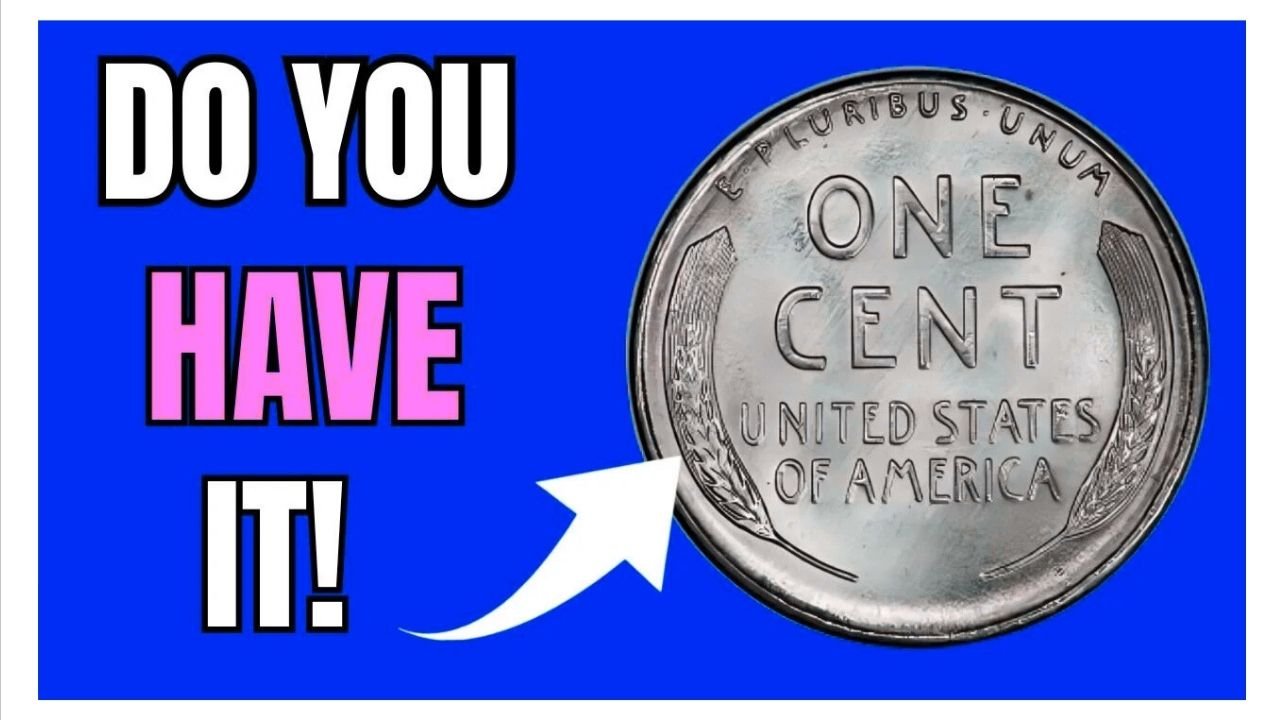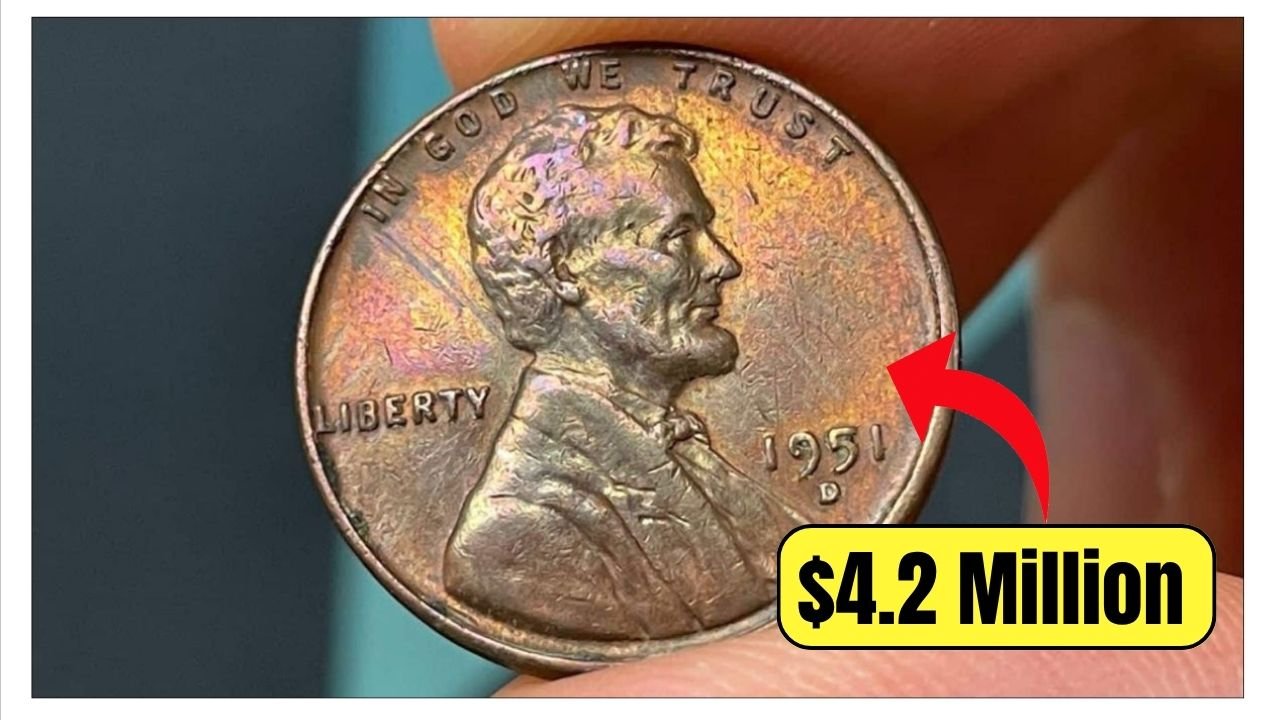Ordinary Penny Is Worth: Imagine digging through your old change jar, only to discover that one humble penny is worth nearly $1 million. It may sound like fiction, but for one rare penny, this is reality. This unassuming copper coin, often mistaken for ordinary pocket change, is valued at $950,000 by collectors and auction houses. So, what makes this penny so special? And more importantly—could you unknowingly have one in your possession?
Let’s dive into the fascinating story behind this remarkable coin, its features, why it’s so valuable, and how you can identify if you might own one.
The Penny That Changed Everything
The penny in question is not encrusted with diamonds or made from gold. It’s a 1943 Lincoln Wheat Penny, and from the outside, it looks just like any other coin from that era. However, what sets it apart is the metal it’s made of.
Background: A Wartime Mistake That Made History
During World War II, the United States faced a significant shortage of copper—an essential material needed for ammunition and other war equipment. To conserve copper for the war effort, the U.S. Mint decided to strike pennies using steel coated with zinc in 1943. These are known as 1943 Steel Cents, and they have a shiny, silver-like appearance.
But something unexpected happened during this transition.
Due to either human error or leftover copper planchets (blanks) in the minting presses, a few 1943 pennies were struck using copper instead of steel. These rare errors are now considered one of the most valuable and iconic coins in American history.
Why Is the 1943 Copper Penny Worth $950,000?
Rarity Equals Value
Numismatists (coin collectors) estimate that fewer than 20 authentic 1943 copper pennies exist across all three mints (Philadelphia, San Francisco, and Denver). The sheer rarity of this error coin drives its value into the six-figure range.
High Auction Records
In 2010, a 1943-D Copper Penny sold for $1.7 million in a private transaction. More recently, a pristine Philadelphia-minted 1943 copper penny fetched $950,000 at auction in 2023, making headlines once again and fueling a new wave of interest among collectors and casual enthusiasts alike.
What Makes the 1943 Copper Penny Stand Out?
Let’s break down the visual and physical characteristics that make this coin easy to spot—if you know what to look for.
Key Features of the Rare 1943 Copper Penny:
| Feature | Detail |
|---|---|
| Year | 1943 |
| Mint Marks | None (Philadelphia), “D” (Denver), “S” (San Francisco) |
| Color | Copper-reddish brown (not steel-gray) |
| Metal Composition | 95% copper, 5% zinc/tin |
| Weight | Approx. 3.11 grams |
| Magnetic? | No (unlike steel cents, which are magnetic) |
| Design | Lincoln Wheat Reverse |
TIP: If your 1943 penny sticks to a magnet, it’s not the rare copper version—it’s the common steel cent.
How to Test If You Have the $950,000 Penny
Here’s a quick guide to determine whether your 1943 penny is worth checking further:
Step 1: Check the Date
Look for the year “1943” on your Lincoln penny.
Step 2: Observe the Color
Is it reddish-brown like a regular copper penny? If yes, you may have a rare one.
Step 3: Use a Magnet
The rare copper version is not magnetic. The common steel cents are.
Step 4: Weigh the Coin
Use a precise scale. If the penny weighs around 3.11 grams, it’s likely copper. A steel cent will weigh closer to 2.7 grams.
Step 5: Seek Professional Authentication
If your penny passes all these tests, get it certified by a reputable coin grading service like PCGS or NGC. Do not try to clean or alter the coin.
Other Rare Pennies You Should Watch For
While the 1943 copper penny steals the spotlight, it’s not the only U.S. penny worth serious money.
Table: Rare and Valuable Pennies Worth Checking
| Year | Mint Mark | Error Type | Approx. Value |
|---|---|---|---|
| 1909-S VDB | S | Low mintage | $600 – $4,000 |
| 1944 Steel Cent | D/S/None | Struck on leftover steel planchet | $75,000 – $200,000 |
| 1955 | None | Doubled Die Obverse | $1,000 – $15,000 |
| 1969-S | S | Doubled Die Obverse | $35,000 – $100,000 |
| 1972 | None | Doubled Die Obverse | $300 – $1,200 |
| 1983 | None | Doubled Die Reverse | $100 – $700 |
1. Teenager Cashes in for College
In 2019, a 16-year-old from Massachusetts found a 1943 copper penny in a family collection and later sold it for $204,000, covering his college tuition in full.
2. Garage Sale Goldmine
A Pennsylvania couple discovered a rare penny in a box of miscellaneous coins purchased at a garage sale for $5. The 1943 copper cent sold for $375,000 in a private sale.
These stories continue to inspire Americans to check their piggy banks, dresser drawers, and inherited coin jars.
The Role of Coin Grading in Determining Value
Why Coin Grade Matters
Even among rare coins, condition is everything. A heavily circulated 1943 copper penny may still be valuable, but a Mint State (MS-65 or higher) coin could fetch hundreds of thousands more.
Grading Scale Overview
| Grade | Description | Value Range |
|---|---|---|
| Good (G-4) | Heavy wear, major details worn | $100,000 – $250,000 |
| Fine (F-12) | Moderate wear | $250,000 – $400,000 |
| Extremely Fine (EF-40) | Light wear on high points | $400,000 – $600,000 |
| Mint State (MS-65+) | No wear, sharp strike | $750,000 – $950,000 |
If you believe you’ve hit the jackpot, here’s what to do next:
-
Get It Authenticated – Send it to PCGS or NGC.
-
Get It Appraised – Contact a numismatic expert or rare coin dealer.
-
Explore Auction Houses – Consider selling through trusted platforms like:
-
Heritage Auctions
-
Stack’s Bowers
-
GreatCollections
-
Avoid casual online marketplaces like eBay unless you’re working with verified coin dealers.
FAQs – Ordinary Penny Is Worth
Q1: How do I know if my 1943 penny is copper?
A: Look for a reddish-brown color, test with a magnet (copper won’t stick), and weigh it (should be around 3.11 grams).
Q2: Can I sell my 1943 steel penny?
A: Yes, but steel cents are common and usually worth less than $1 unless in pristine condition.
Q3: Are all 1943 pennies valuable?
A: No. Only the ones made from copper instead of steel are extremely valuable. Steel cents are common.
Q4: Can I clean my penny to improve its value?
A: Never clean a coin! It can reduce its value significantly. Let professional graders handle it.
Q5: Where can I get my coin evaluated?
A: PCGS (Professional Coin Grading Service) or NGC (Numismatic Guaranty Company) are the best places to start.






